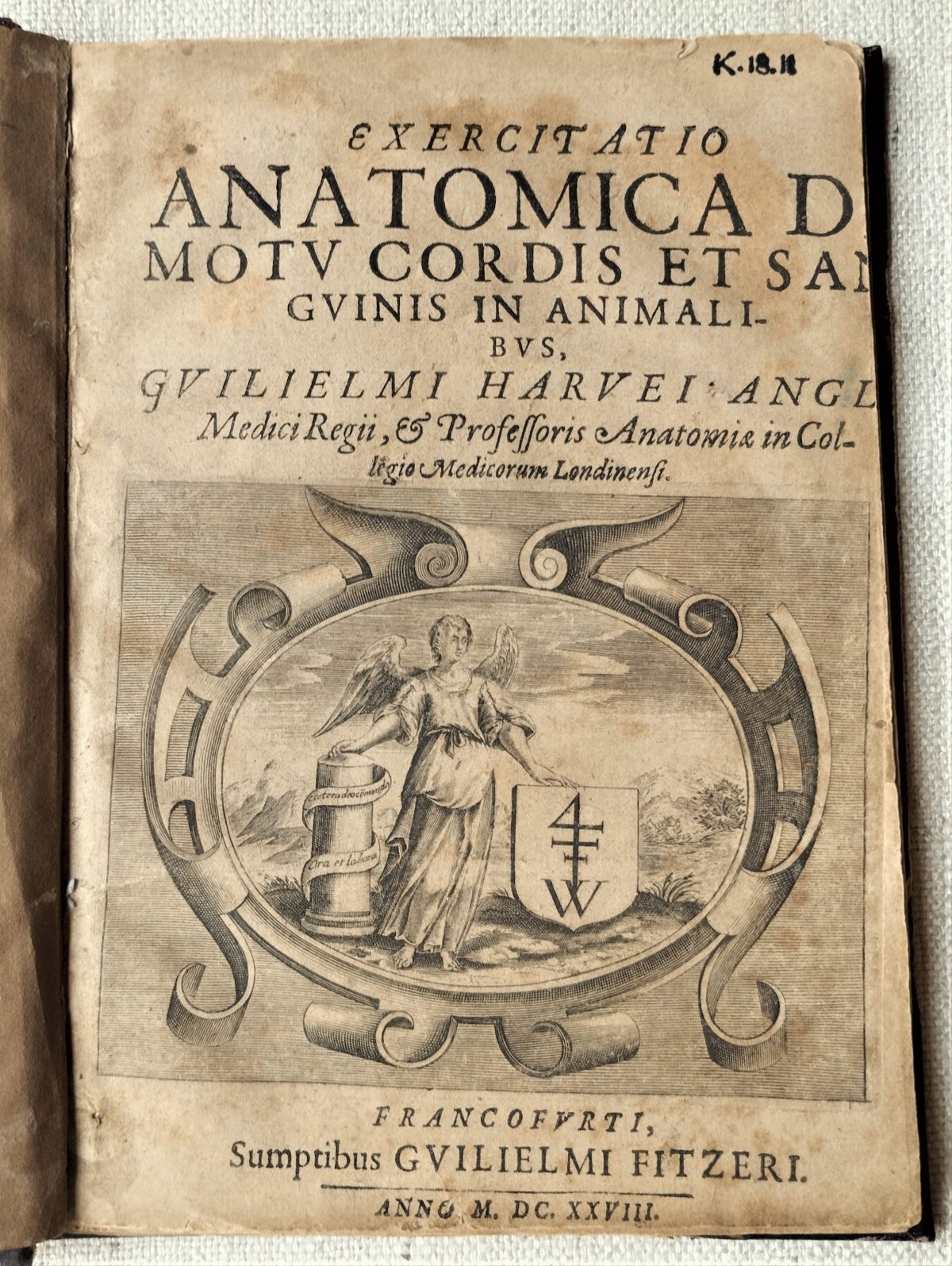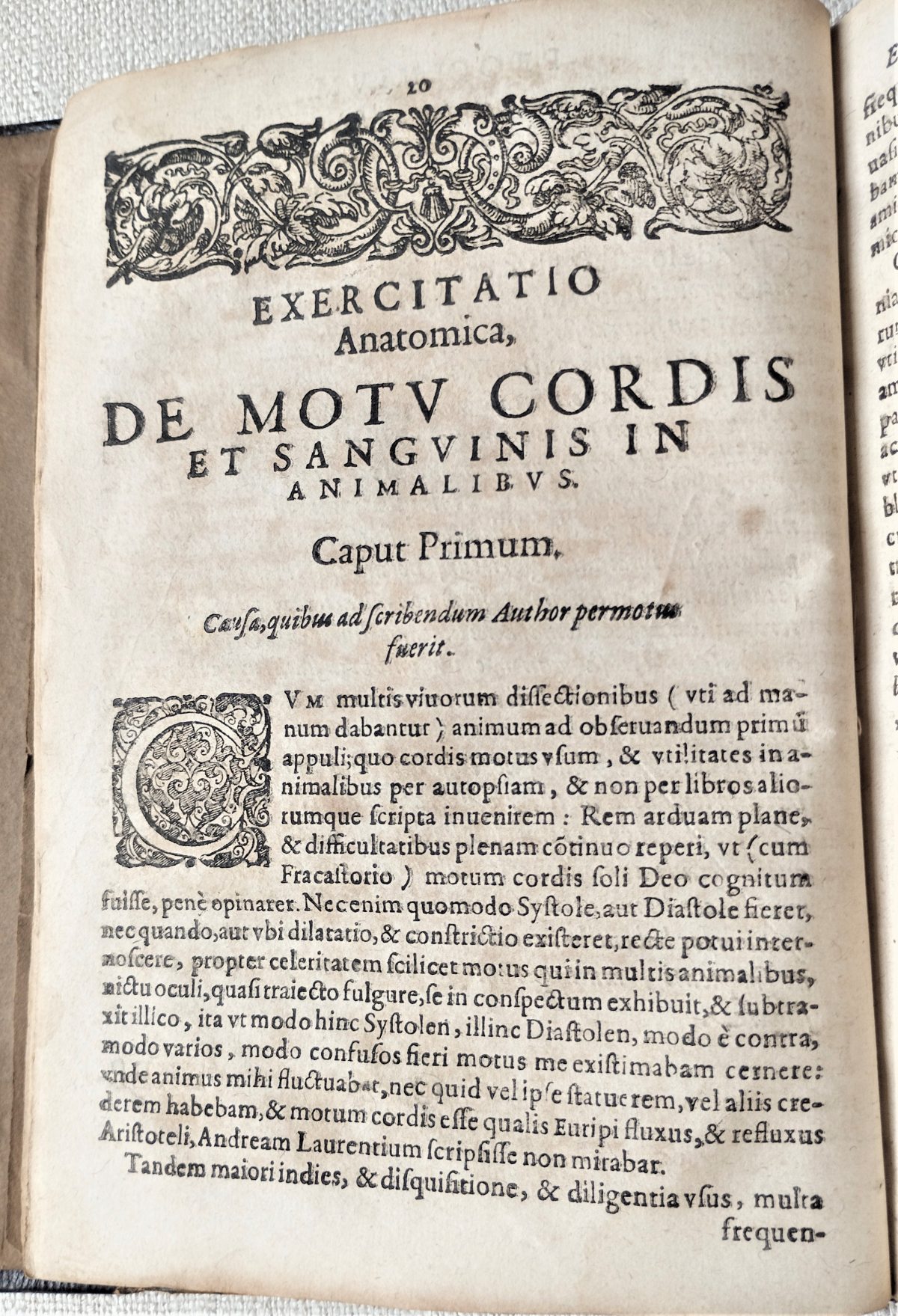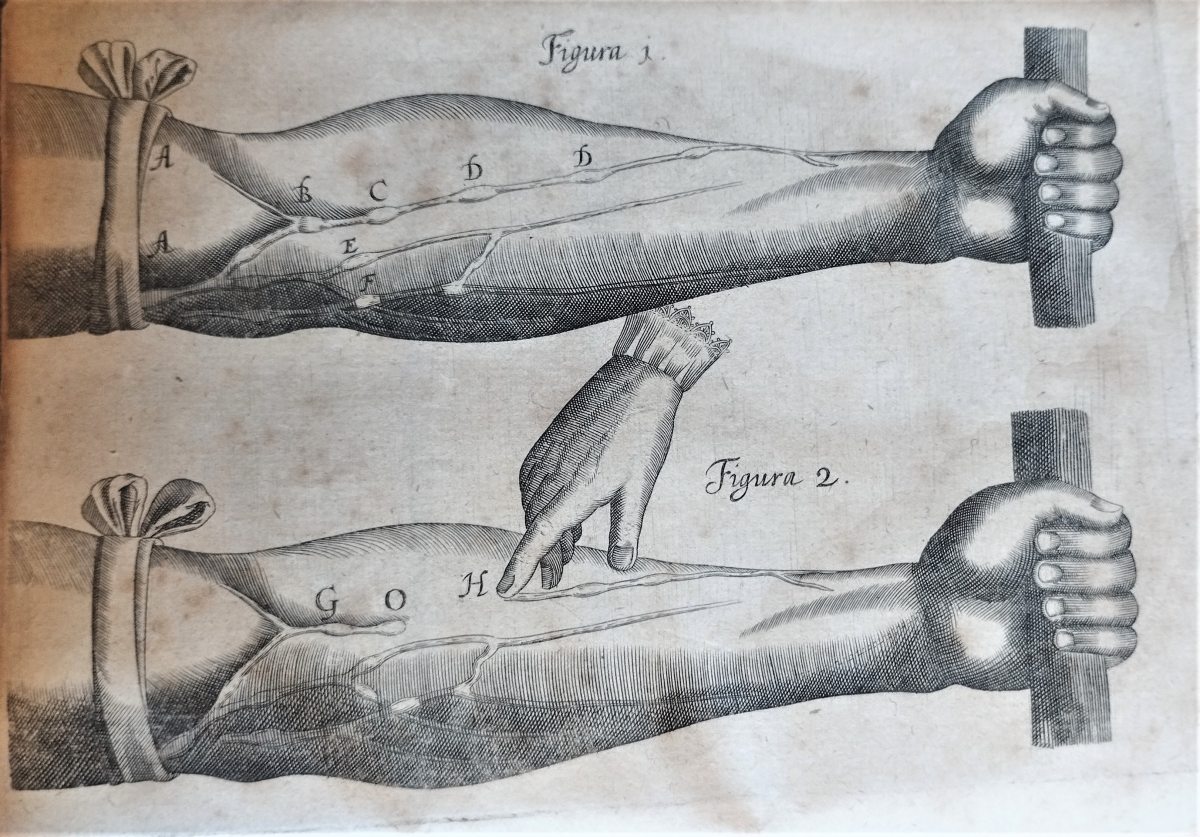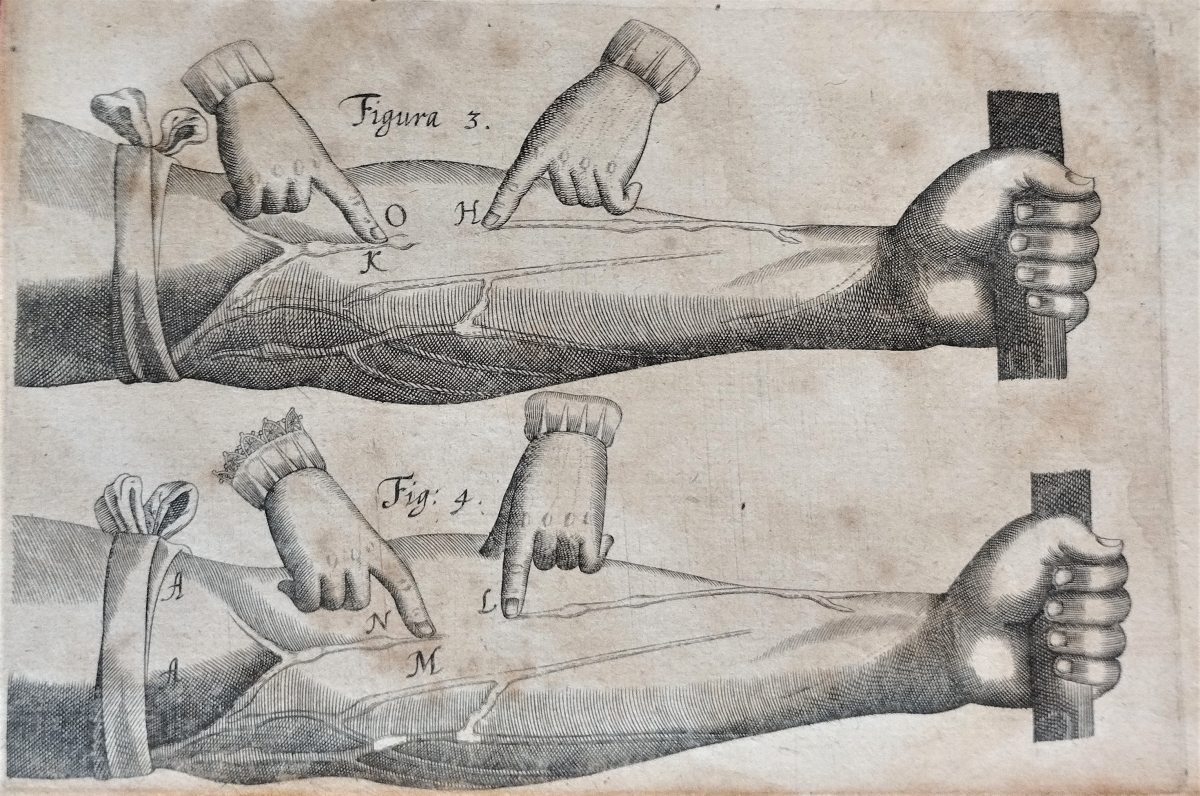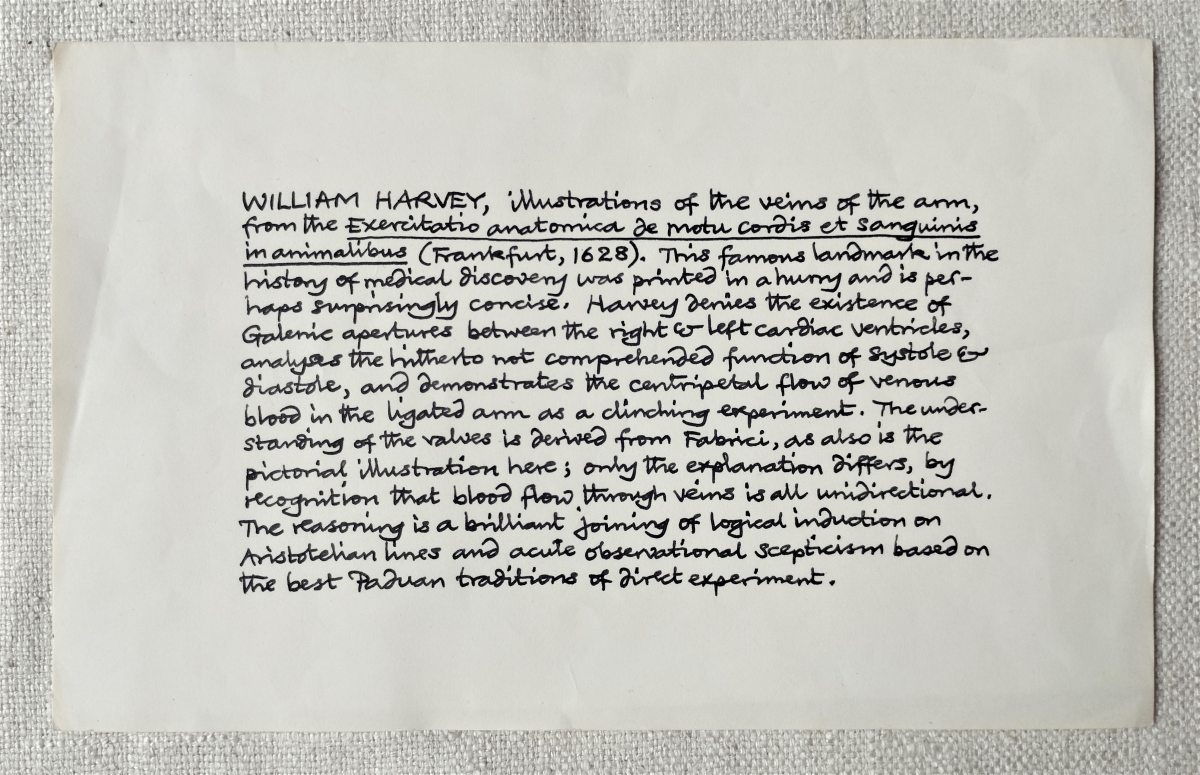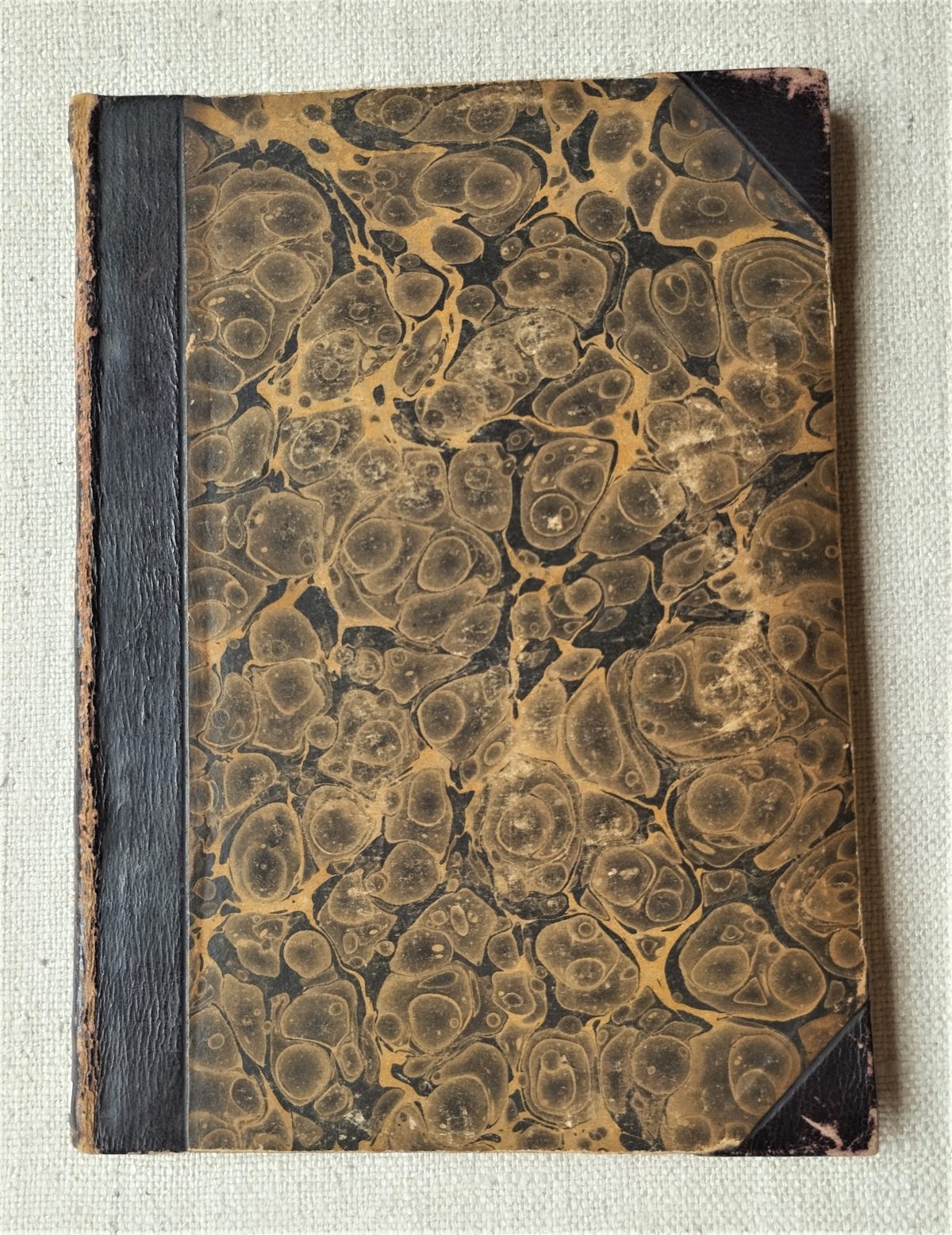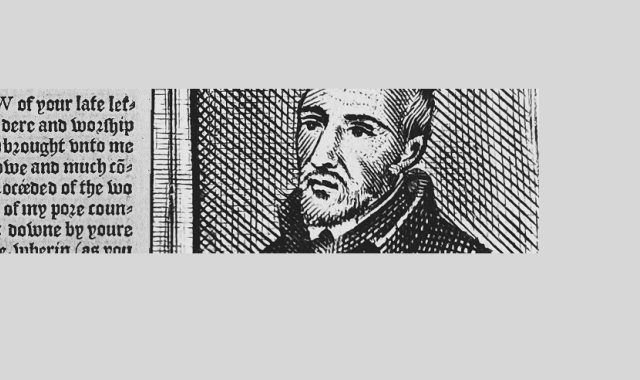A new idea in circulation
Exercitatio anatomica de motu cordis et sanguinis in animalibus (Movement of the heart and blood in living creatures), by William Harvey. Printed in Frankfurt by William Fitzer, 1628. Lower Library, K.18.11
Harvey, acclaimed by the College’s Biographical History as ‘the great physiologist’, matriculated here in 1593 and proceeded to M.D. at Padua in 1602, where he studied under Fabricius. In the footsteps of his College predecessors William Butts (Henry VIII) and Dr Caius (Edward VI and Mary I) in 1618 he was appointed Royal Physician to James I. Upon the accession of Charles I in 1625 he was re-appointed and continued in this service until 1645. De motu cordis is dedicated to the royal master. The choice of Frankfurt as place of publication was deliberate; a bookfair held in the city at the time is believed to have provided a ready market for potential purchasers.
The book is seminal in that Harvey was the first to demonstrate accurately the mechanisms by which blood was pumped to the heart and circulated around the body. His mentor, Fabricius, had already expounded a theory of circulation, but was unaware of the significance that the valves in the veins perform in this function. Amongst other things, Harvey showed that the contraction of the heart coincides with the pulse, that blood in the arteries and in the veins is identical and that a surplus of blood sent to the tissues by the former may be returned to the latter.
For a description of the famous illustration of the veins of the arm we provide a photo in the gallery of the legend used in an earlier exhibition of this book, written in the elegant hand of J. H. Prynne (Fellow, 1962– and Librarian, 1969–2006).
The College’s acquisition of this book came rather late, when we paid £10-10-0 (ten pounds, ten shillings = £10.50) for a copy in November 1897.
John Case, quack doctor << A new idea in circulation >> Mite or mite not


